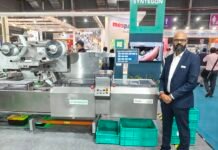Data released on 27 November 2019 by the government indicates that India’s economy grew at its slowest pace in six years, in the second quarter of this fiscal year ending 30 September 2019. The official figures indicate that gross domestic product (GDP) rose just 4.5% in the second quarter (Q2-FY2019-20), and gross value added (GVA) growth was just 4.3% compared to 4.9% in the previous quarter.
The growth in gross fixed capital formation (GFCF), the key indicator for investment, fell to a 19-quarter low in the July-September quarter (Q2) of financial year 2019-20. Although the GFCF grew by 1% in Q2FY20, compared to a 4.04% growth in the previous quarter, it still fell in comparison to the last 19 quarters. The share of GFCF in the overall GDP shrank to 27.8% during the quarter, against 29.7% in the previous quarter – the lowest since Q4FY17.
Private consumption expenditure data
Contrary to the evidence of worsening consumption demand across major economic sectors, the government claims that private final consumption expenditure (PFCE) grew by 5.1% in Q2 of FY 2019-20. This figure is somewhat at odds with the evidence from several sectors that have shown deceleration of demand, including automobile, electricity, sugar, real estate, and biscuits, amongst others.
IppStar surveys show print industry correlation with economic data
Our sister organization, IppStar (www.ippstar.org), has done two broad studies in recent months. The first is a stratified sample survey of offset and digital printers across India, including all sizes and geographies. The second is a purposive sample of those printers who have purchased new offset multicolor presses in the past three years – that is, printers who are generally growing and perhaps larger in turnover and with a higher proportion being in packaging and labels.
In both surveys, 76% of those interviewed say that GDP growth, either directly or indirectly, influences their growth. The stratified sample indicates a slightly higher number of printers who say that there is a direct correlation. The surveys, nevertheless, suggest that both segments remain optimistic and plan to invest in capital equipment in the next three years.












